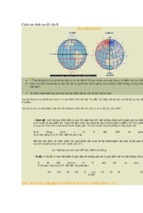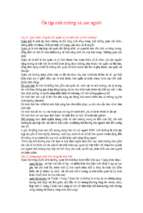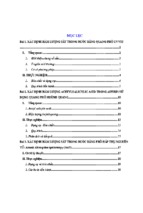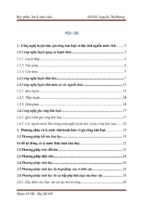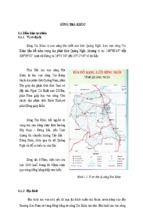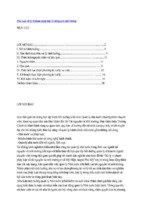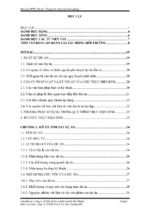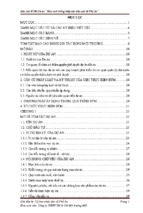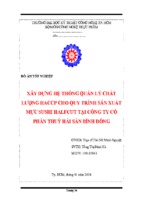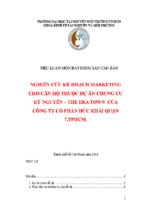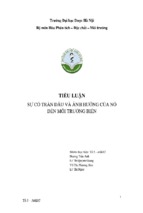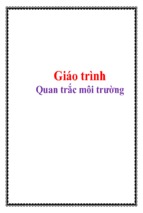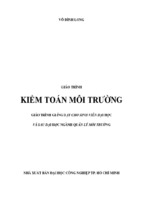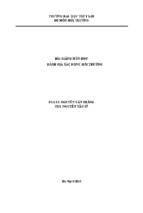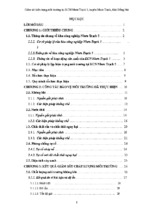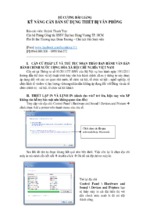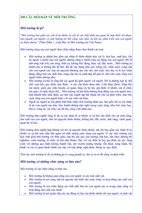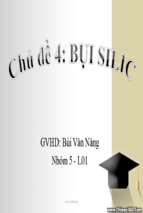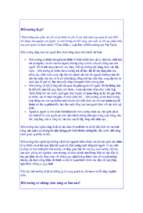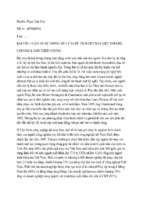Mô tả:
HVAC Systems at Y2E2
Y2E2 – HVAC sequence of operation
(controls)
Week 3
CEE 243
Copyright 2012
HVAC Systems at Y2E2
Big idea
• Modern energy management systems include a
combination of passive and active control of energy
distribution
– Passive: constant (volume/flow)
– Active: variable (volume/flow) under computer
control
• Based on If-then conditional control rules of
general form
If setpoint value out of range and
Other conditions met
Then adjust control variable value
CEE 243
2
Copyright 2012
HVAC Systems at Y2E2
Jargon
•
•
•
•
•
•
•
•
•
•
Active beam
AHU
CAV
Cfm
Condition
Diffuser
Diff pressure
Fabric loss
Fan coil
Heat exchanger
•
•
•
•
•
•
•
•
•
JK-1
Natural ventilation
Radiant slab
Setpoint
Tempered hot/cold
water
U value
VAV
Zone
Zone splitter
CEE 243
3
Copyright 2012
HVAC Systems at Y2E2
Control basics
• Typically active response components have a setpoint,
i.e., operating functional objective value
– E.g., room temperature setpoint = 73 +- 3oF
• Under computer control, the HVAC building management
system (BMS) adjusts value of active control components
to maintain the setpoint of response components
– e.g., flow rate damper position = 0 – 100% open
• BMS rules “tell” control system how to reach setpoint
• BMS is linked to input sensors and output control signals
CEE 243
4
Copyright 2012
HVAC Systems at Y2E2
Active beams provide efficient conditioned
fresh air to spaces: mostly passive
(Chilled) water passes through "beam"
heat exchanger
beam chills air
air becomes denser
(cool) air falls to floor
Convection & room cooling
• Heating similar
Reason for efficiency: heat capacity of
water >> that of air: 1 cubic foot
• Air: heat capacity 37 JK-1
• Water: heat capacity 20,050 JK-1.
heat/cool with much lower pumped
volume in smaller components
CEE 243
5
Copyright 2012
HVAC Systems at Y2E2
Simple control example – Active beam
constant
Heat if SP < 71 F
Cool if SP > 75 F
Deadband +/- 2 F
CEE 243
6
Copyright 2012
HVAC Systems at Y2E2
(Direct)
Response
variable
Deadband control
1000
120
900
100
700
Air flow CFM
80
600
500
400
60
Deadband
40
300
Valve Position percent
800
Control
variable
Air Flow
Cooling Valve
Heating Valve
200
20
100
0
0
65 66 67 68 69 70 71 72 73 74 75 76 77 78 79 80 81 82 83 84 85
Temperature degrees F
CEE 243
Setpoint
7
Copyright 2012
HVAC Systems at Y2E2
Active beams
• Active (control) components: Cold and hot water valves, air
flow damper
• Temperature control examples:
– Occupied room air temperature setpoint user adjustable +/- 3F
– Unoccupied setpoints: cooling =78F; heating = 65F
– Control cold and/or hot water active beam valve position to
achieve room air temperature setpoint
– Temperature control deadband of +/- 2F
– User override can extend occupied hours by 2 hours
• Active beam air flow control:
– Air flow rate constant on during occupied hours (basement 24/7);
off during unoccupied hours
– CAV boxes modulate flow to achieve constant air flow during
occupied hours only, except during night setback and warmup
(compensating for different air pressures)
CEE 243
8
Copyright 2012
HVAC Systems at Y2E2
North facing spaces contain radiators to
balance fabric heat losses
Fabric heat loss through materials w/ temperature
difference, e.g., walls, windows, floor, roof.
Heat loss Q = ‘U’ * Area * Delta-temperature
CEE 243
9
Copyright 2012
HVAC Systems at Y2E2
Baseboard radiators
• Active components: hot water control valve
• Temperature control examples:
– Occupied temperature setpoint adjustable by
user +/- 3F
– Unoccupied heating temperature setpoint: 65F
– Control hot water valve position of baseboard
heater to achieve room air temperature setpoint
– If outside air temperature > 78F close valve
at all times
– User override extends occupied hours 2 hours
CEE 243
10
Copyright 2012
HVAC Systems at Y2E2
Conference rooms
• Active beam control as in other rooms
• Active component: inline supply fan
• Additional CO2 level control
– If CO2 concentration > max CO2 setpoint
open inline supply fan
– Max CO2 setpoint = 500 ppm above outside
air CO2 concentration
CEE 243
11
Copyright 2012
HVAC Systems at Y2E2
Laboratories
• Active components: damper, water coil valves
• Air flow control
– The greater of:
• The required air changes (6 air changes/hr)
• Amount needed for cooling
• Sufficient makeup air for fume hoods (supply ~ exhaust)
– For heating air flow is set to minimum
– For cooling air flow is set to maximum
• Temperature control
– +/- 2F deadband
CEE 243
12
Copyright 2012
HVAC Systems at Y2E2
Radiant floor
CEE 243
13
Copyright 2012
HVAC Systems at Y2E2
Radiant floor
• Active components: Pump and valve
• Pump off if outside air temperature > 78F
• Otherwise
– Turn on pump
– To reach steady state:
• Increase valve position by 10% (every 10 min) until
temperature setpoint of 71F is met
• Decrease valve position by 5% (every 10 min) until
temperature setpoint of 71F is met
– After reaching steady state
• Adjust valve position by 1% (every 10 min) only
• During unoccupied hours temperature setpoint = 66F
CEE 243
14
Copyright 2012
HVAC Systems at Y2E2
Fan Coil Units
CEE 243
15
Copyright 2012
HVAC Systems at Y2E2
Fan coil units
• Active components: chilled water control
valve
• On 24/7
• Temperature control:
– Modulate chilled water valve position to
achieve temperature setpoint if space
temperature is above setpoint
– If two spaces are controlled by one unit,
control using higher space temperature
CEE 243
16
Copyright 2012
HVAC Systems at Y2E2
Main chilled water loop
Serves:
• Tempered water loop
• Cooling coils
(AHU, FC, CVs, VAVs)
• Server Rack
CEE 243
17
Copyright 2012
HVAC Systems at Y2E2
Chilled water system
• Active components: Control valve and
booster pump
• Normal operation: Valve is used to control
differential pressure to setpoint (if not
enough booster pump helps out)
• If water return temp < 58F (for > 5 min) reset
down differential pressure setpoint
• If water return temp < 55F (for > 5 min), start
pump and recirculate water
– If water supply temp < 48F go back to normal
CEE 243
18
Copyright 2012
HVAC Systems at Y2E2
Tempered chilled water
loop
Serves:
• Active beams
CEE 243
19
Copyright 2012
HVAC Systems at Y2E2
Tempered chilled water system
• Active components: Two pumps
• On/off speed control
– Lead/lag operation (weekly)
– Pumps are controlled to meet differential pressure setpoint
• lead pumps first
• If pressure difference too small, lag pump starts in addition
• If both run slow (< 25Hz), turn off lag pump
– Pumps should be off during unoccupied hours (expect overrides)
• Temperature control
– Maintain supply water temperature at 60F by opening and
closing control valve
• Supply Temp Reset (to prevent condensation on active beams)
– If outside dewpoint temperature > 58F
-> supply temperature setpoint = dewpoint temperature + 2F
CEE 243
20
Copyright 2012
- Xem thêm -


